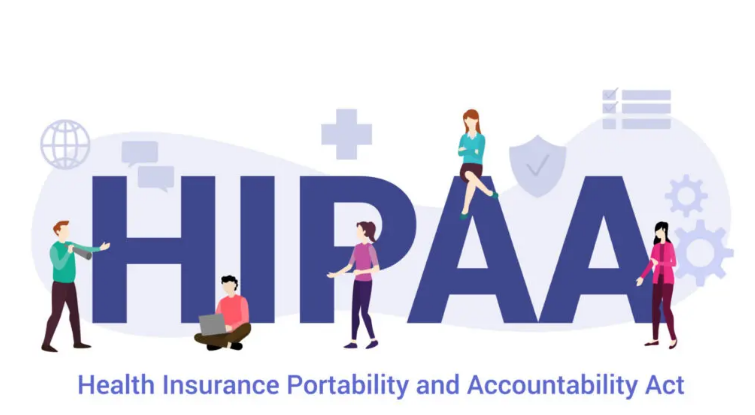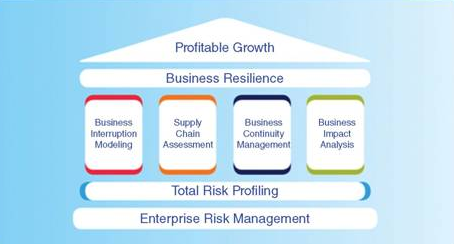The Health Insurance Portability and Accountability Act (HIPAA) is one of the most significant pieces of legislation affecting the American healthcare system. Enacted in 1996, HIPAA has two major components: ensuring the portability of health insurance for individuals transitioning between jobs, and safeguarding the privacy and security of personal health information (PHI). While originally designed to address issues surrounding health insurance continuity, the law has evolved to encompass a much broader range of healthcare privacy and security concerns.
This article provides an in-depth policy analysis of HIPAA, examining its origins, key provisions, impact on healthcare providers and patients, and challenges in its implementation. We will also consider how HIPAA has adapted to modern challenges, particularly in the context of technological advancements and increasing concerns about data breaches and patient confidentiality.
1. Background and Origins of HIPAA
Before the enactment of HIPAA, employees who changed or lost jobs often found themselves unable to retain health insurance, either because they could not afford new policies or because their pre-existing medical conditions made them uninsurable. HIPAA was introduced primarily to address these issues by making health insurance more portable between jobs and limiting exclusions for pre-existing conditions in group health plans. Over time, the law’s scope expanded to include provisions for the protection of sensitive health information.
Key Goals of HIPAA
- Portability of Health Insurance: HIPAA sought to ensure that individuals who changed jobs could maintain their health insurance coverage without facing denials due to pre-existing conditions. It also aimed to limit the waiting periods that health plans could impose for coverage of pre-existing conditions.
- Administrative Simplification: The law introduced standards for the electronic exchange of healthcare information to improve efficiency, reduce administrative costs, and make healthcare more accessible.
- Privacy and Security of Health Information: HIPAA established guidelines for the protection of PHI to address growing concerns about patient privacy. This includes both the use and disclosure of health information and the safeguarding of electronic health records (EHRs).
2. The Core Components of HIPAA
HIPAA comprises several key provisions that have shaped the landscape of healthcare insurance, privacy, and security. These include Title I, which addresses health insurance portability, and Title II, which focuses on administrative simplification and the protection of patient data.
Title I: Health Insurance Portability
The portability aspect of HIPAA prevents health insurance companies from denying coverage or charging higher premiums based on pre-existing conditions for individuals moving between group health plans. It also limits the duration of pre-existing condition exclusion periods in group health plans and prevents employers from imposing discriminatory waiting periods.
Key provisions under Title I include:
- Guaranteed Issue and Renewal: Health insurance providers must offer coverage to individuals transitioning between jobs or insurance plans. The ability to renew coverage is also protected under HIPAA, provided that policyholders pay their premiums and comply with plan requirements.
- Exclusion Limits: HIPAA restricts health insurers from denying coverage for pre-existing conditions, setting a maximum exclusion period of 12 months for individuals with continuous coverage of at least 63 days.
- Protection for Dependents: HIPAA’s portability provisions extend to dependents, ensuring that family members are also covered under new health plans.
Title II: Administrative Simplification
The most far-reaching component of HIPAA is Title II, also known as the Administrative Simplification provisions. This section of the law establishes national standards for electronic healthcare transactions and requires healthcare providers, insurers, and clearinghouses to protect patient data. Title II also created the HIPAA Privacy Rule and HIPAA Security Rule, which form the foundation of modern healthcare privacy law.

The Privacy Rule
The HIPAA Privacy Rule, which took effect in 2003, governs the use and disclosure of PHI by covered entities, including healthcare providers, insurers, and clearinghouses. The rule ensures that patients have greater control over their health information while imposing strict guidelines on how entities can use, share, and store this information.
Key provisions of the Privacy Rule include:
- Patient Rights: Patients have the right to access their medical records, request corrections to their information, and receive an accounting of disclosures made by covered entities.
- Minimum Necessary Standard: Covered entities are required to limit the use and disclosure of PHI to the “minimum necessary” amount of information needed to accomplish a specific task.
- Authorization for Use and Disclosure: In most cases, covered entities must obtain written authorization from patients before using or disclosing their PHI for purposes not related to treatment, payment, or healthcare operations.
The Security Rule
The HIPAA Security Rule, enacted in 2005, establishes standards for protecting electronic protected health information (ePHI). The rule applies specifically to ePHI that is created, received, maintained, or transmitted by covered entities and their business associates.
The Security Rule sets forth three types of safeguards that entities must implement to ensure the confidentiality, integrity, and availability of ePHI:
- Administrative Safeguards: Policies and procedures to manage the selection, development, and use of security measures, including workforce training and access controls.
- Physical Safeguards: Measures to protect physical access to systems storing ePHI, such as facility access controls, workstation security, and device management.
- Technical Safeguards: The use of technology to secure ePHI, including encryption, audit controls, and user authentication.
3. Impact of HIPAA on Healthcare
HIPAA has had a profound effect on the healthcare industry, particularly in the areas of privacy, security, and the standardization of healthcare transactions. These changes have both positive and negative consequences for healthcare providers, insurers, and patients.
3.1 Benefits of HIPAA
- Enhanced Privacy and Security: HIPAA’s Privacy and Security Rules have significantly strengthened protections for patient data, reducing the risk of unauthorized access, breaches, and misuse of sensitive information.
- Standardization of Transactions: The Administrative Simplification provisions have helped streamline the healthcare system by introducing uniform standards for electronic transactions. This has reduced paperwork and administrative overhead, saving time and resources for healthcare providers.
- Portability of Insurance: By guaranteeing the portability of health insurance and limiting exclusions for pre-existing conditions, HIPAA has provided critical protections for individuals transitioning between jobs or insurance plans.
- Increased Patient Rights: Patients now have greater access to their health information, giving them more control over their healthcare and the ability to ensure that their records are accurate.
3.2 Challenges and Criticisms
While HIPAA has achieved many of its goals, it has also faced significant challenges in implementation. Some of the key criticisms of the law include:
- Complexity and Compliance Costs: Healthcare providers and organizations often face significant compliance challenges, particularly smaller practices that lack the resources to implement the required safeguards. The administrative burden of complying with HIPAA’s complex rules can be costly, leading to frustrations among healthcare providers.
- Technological Challenges: As technology has advanced, so have the risks associated with protecting patient data. Data breaches have become more frequent, and healthcare organizations must continuously update their security measures to stay ahead of cyber threats. The reliance on outdated or vulnerable IT systems can put ePHI at risk, making compliance with HIPAA’s Security Rule more challenging.
- Limited Enforcement: While HIPAA imposes strict penalties for noncompliance, enforcement has been inconsistent. Some critics argue that the law lacks sufficient oversight and that penalties are not severe enough to deter breaches or negligent behavior.
- Gaps in Coverage: HIPAA only applies to “covered entities” and their business associates, meaning that other entities, such as mobile app developers or data brokers, may collect and use health-related information without being subject to HIPAA’s privacy and security requirements.
4. HIPAA in the Age of Technology: New Challenges and Adaptations
In the two decades since HIPAA’s enactment, the healthcare landscape has changed dramatically, particularly with the rise of digital technology. As electronic health records, telemedicine, and mobile health applications have become increasingly common, HIPAA has had to adapt to new challenges in protecting patient data.
4.1 Electronic Health Records (EHRs)
The widespread adoption of EHRs has transformed how healthcare providers manage patient data. While EHRs have improved care coordination and made it easier for patients to access their health information, they have also introduced new risks related to data security. EHR systems are attractive targets for hackers, and data breaches involving ePHI have become a growing concern.
To address these risks, HIPAA’s Security Rule requires healthcare organizations to implement technical safeguards, such as encryption and audit trails, to protect ePHI. However, as technology evolves, so must the security measures that healthcare providers employ. The challenge of keeping pace with advancements in cybersecurity continues to be a significant issue for the healthcare industry.
4.2 Telemedicine and Remote Healthcare
The COVID-19 pandemic accelerated the use of telemedicine, allowing patients to receive care remotely through video calls and other digital platforms. While telemedicine has made healthcare more accessible, it has also raised new questions about HIPAA compliance.
During the pandemic, the U.S. Department of Health and Human Services (HHS) temporarily relaxed certain HIPAA enforcement measures to facilitate the rapid expansion of telemedicine services. However, as telemedicine becomes a permanent fixture in healthcare, providers must ensure that their telehealth platforms are HIPAA-compliant, particularly with regard to protecting patient data during virtual consultations.
4.3 Mobile Health Applications
Mobile health applications (mHealth apps) have become increasingly popular, allowing patients to track their health, monitor chronic conditions, and share information with healthcare providers. However, not all mHealth apps are subject to HIPAA, especially those developed by companies that do not meet the definition of a “covered entity.”
As mHealth technology continues to evolve, regulators may need to revisit the scope of HIPAA to ensure that sensitive health information collected by apps is adequately protected. The intersection of healthcare and consumer technology presents a unique challenge in balancing innovation with the need for privacy and security.
5. Conclusion
HIPAA has played a crucial role in shaping the modern healthcare system, particularly in terms of protecting patient privacy and ensuring the portability of health insurance. However, the law’s complexity and the rapidly evolving healthcare landscape present ongoing challenges for compliance and enforcement. As technology continues to transform healthcare, HIPAA must adapt to address new risks and ensure that patient information remains secure.
Looking forward, policymakers, healthcare organizations, and technology developers must work together to ensure that HIPAA’s privacy and security standards remain relevant in the face of new challenges. By fostering a regulatory environment that prioritizes both innovation and patient protection, the healthcare system can continue to evolve while upholding the principles of privacy and security that HIPAA enshrined.








